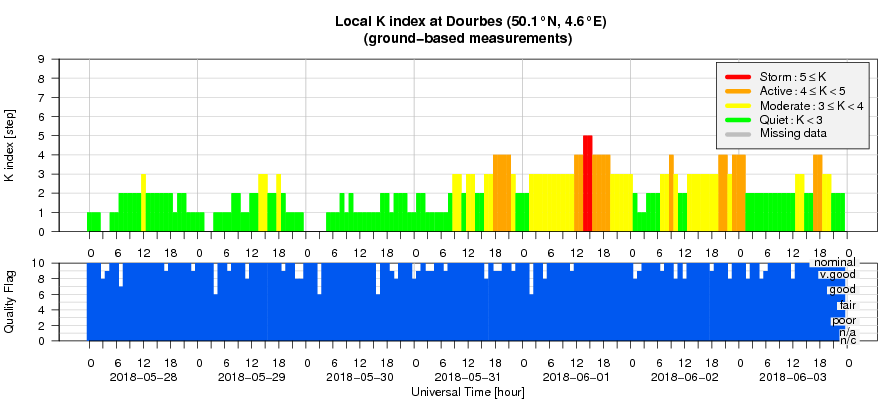- Table of Content
- 1.Proton aurora....
- 2.'Coups de coeu...
- 3.PROBA2 Observa...
- 4.Review of sola...
- 5.The SIDC space...
- 6.The Internatio...
- 7.Geomagnetic Ob...
- 8.Review of iono...
2. 'Coups de coeur' award for Eva Robbrecht
3. PROBA2 Observations (28 May 2018 - 3 Jun 2018)
4. Review of solar and geomagnetic activity
5. The SIDC space weather Briefing
6. The International Sunspot Number
7. Geomagnetic Observations at Dourbes (28 May 2018 - 3 Jun 2018)
8. Review of ionospheric activity (28 May 2018 - 3 Jun 2018)
Proton aurora... on Mars
SUMMARY - Scientists from the STCE have contributed to a research programme that has detected -for the first time- proton aurora on Mars. They used data gathered during the period 2004-2011 by the SPICAM ultraviolet spectrometer on board of ESA's Mars Express.
On Earth, the aurora (or polar lights) are usually known as being caused by the collision of mostly electrons accelerated from the Earth's magnetotail with particles in the Earth's upper atmosphere during a geomagnetic storm. These are called the "discrete aurora", to distinguish them from the weak and featureless "diffuse aurora", which are caused by electrons dribbling in from the Earth's plasma sheet as a result of wave-particle interaction (a complicated process). There exist also proton aurora, which are caused by collisions of -obviously- protons from the solar wind with particles in the upper atmosphere. They are much rarer than the electron aurora, as the protons are usually being deflected by the Earth's magnetic field. The proton aurora radiate their light also in the ultraviolet, so not visible with the human eye.
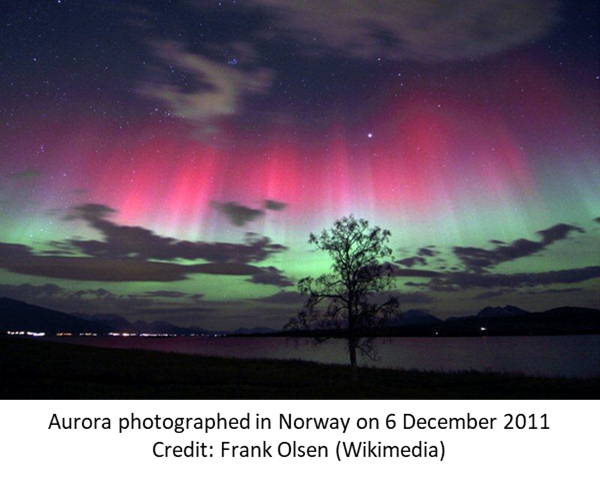
These three types of aurora are well known and plenty observed on Earth. Aurora have been observed on other planets in our solar system too. Even on Mars, which is amazing as the red planet does not have a global magnetic field such as the Earth. Instead, localized areas on Mars' southern hemisphere have retained the imprint of the magnetic field that reigned a long time ago. So, despite the lack of a global magnetic field which strongly limits the appearance of aurora, discrete auroral features on Mars were first reported in 2005 using Mars Express' SPICAM instrument, and diffuse aurora in 2015 by the MAVEN spacecraft. Both types of aurora were observed in the ultraviolet (UV), and on Mars' nightside.
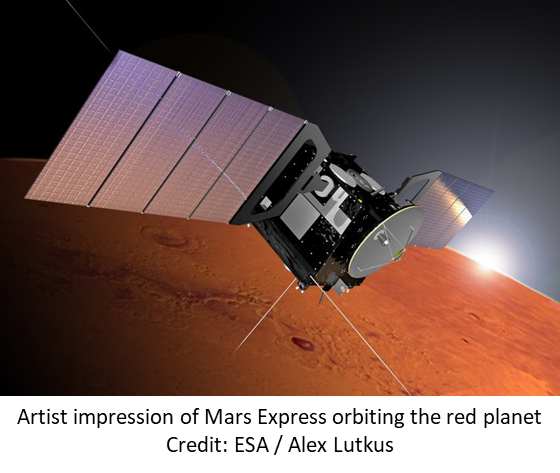
The new results obtained by the researchers from the Université de Liège (ULg), the STCE, and LATMOS-CNRS, now clearly indicate that proton aurora also exist on Mars. By analyzing nearly 8 years of data (July 2004 - May 2011) from the Spectroscopy for the Investigation of the Characteristics of the Atmosphere of Mars (SPICAM) ultraviolet spectrograph on board Mars Express, also the third type of UV aurora was discovered on Mars. In fact, it was the first time ever that researchers were able to observe the existence of this type of aurora elsewhere than on Earth. It has been observed only on Mars' dayside as it is produced by the direct interaction of solar wind protons with the martian upper atmosphere. The auroral signature is an enhancement of the Lyman-alpha emission (121.6 nm) featuring peak emissions around 120 to 150 km in altitude. From the full SPICAM database, six clear cases of proton aurora have been found in 2005 and 2007. Either coronal mass ejections (CMEs) and/or co-rotating interaction regions (CIRs, related to wind streams from coronal holes) were identified as triggers for each of these events.
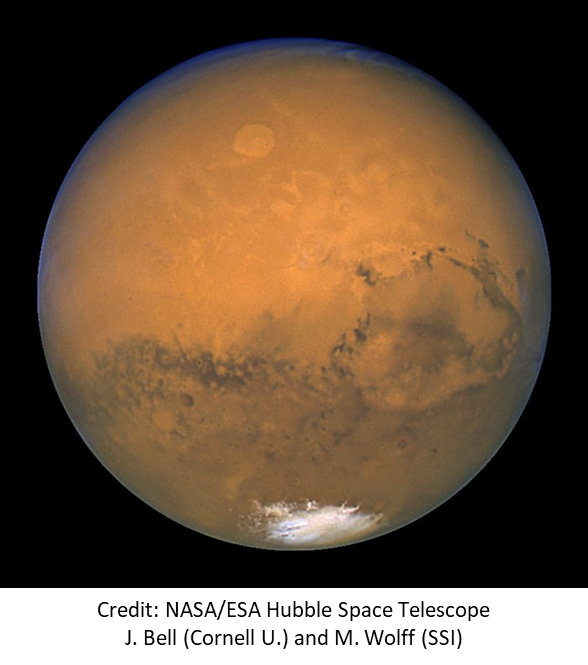
Link to the press release from the Université de Liège:
Proton auroras observed for the first time on Mars
https://www.news.uliege.be/cms/c_9942571/en/proton-auroras-observed-for-the-first-time-on-mars
Link to the online paper from B. Ritter et al.:
Observations of the Proton Aurora on Mars With SPICAM on Board Mars Express
https://agupubs.onlinelibrary.wiley.com/doi/abs/10.1002/2017GL076235
Dr Birgit Ritter is researcher at ULg and STCE. Dr Luciano Rodriguez is researcher at the STCE.
'Coups de coeur' award for Eva Robbrecht
20th anniversary of Matiere Grise: space weather research of the Observatory amongst the favorites of the program
On March 2018, the French-speaking program Matiere Grise from the RTBF (Belgian television channel) celebrated its 20th anniversary during a gala evening with Paris Match Belgium. On this occasion, trophies were awarded to the researchers who were particularly involved in the making of their documentaries.

Dr. Eva Robbrecht, who worked at the Royal Observatory of Belgium, was one of the laureates of this evening for her contribution to a program about space weather.
The space weather documentary was broadcasted on 19 January 2012. It notably focused on the NASA satellite SDO (Solar Dynamic Observatory), a mission designed to understand the causes of solar variability and its impacts on Earth. The Observatory is one of the scientific institutes which receive SDO's raw data. The SDO mission, which was lanced on 11 February 2010, is still active.

PROBA2 Observations (28 May 2018 - 3 Jun 2018)
Solar Activity
Solar flare activity fluctuated between very low and low during the week.
In order to view the activity of this week in more detail, we suggest to go to the following website from which all the daily (normal and difference) movies can be accessed: http://proba2.oma.be/ssa
This page also lists the recorded flaring events.
A weekly overview movie can be found here (SWAP week 427): http://proba2.oma.be/swap/data/mpg/movies/weekly_movies/weekly_movie_2018_05_28.mp4
Details about some of this week's events, can be found further below.
If any of the linked movies are unavailable they can be found in the P2SC movie repository here:
http://proba2.oma.be/swap/data/mpg/movies/
Monday May 28
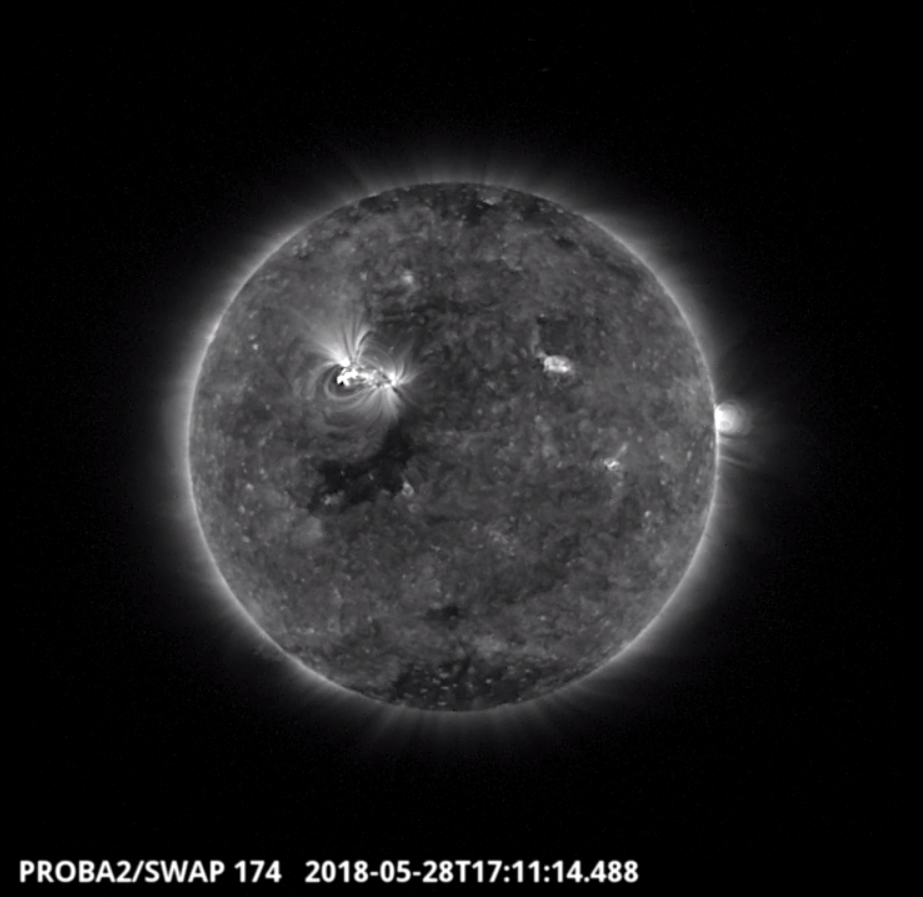
The largest flare of the week was a C2.7 associated with NOAA AR 2712. The flare is visible in the north-east quadrant of the solar disk in the SWAP image above at 17:11 UT.
Find a movie of the event here (SWAP movie): http://proba2.oma.be/swap/movies/20180528_swap_movie.mp4
Thursday May 31
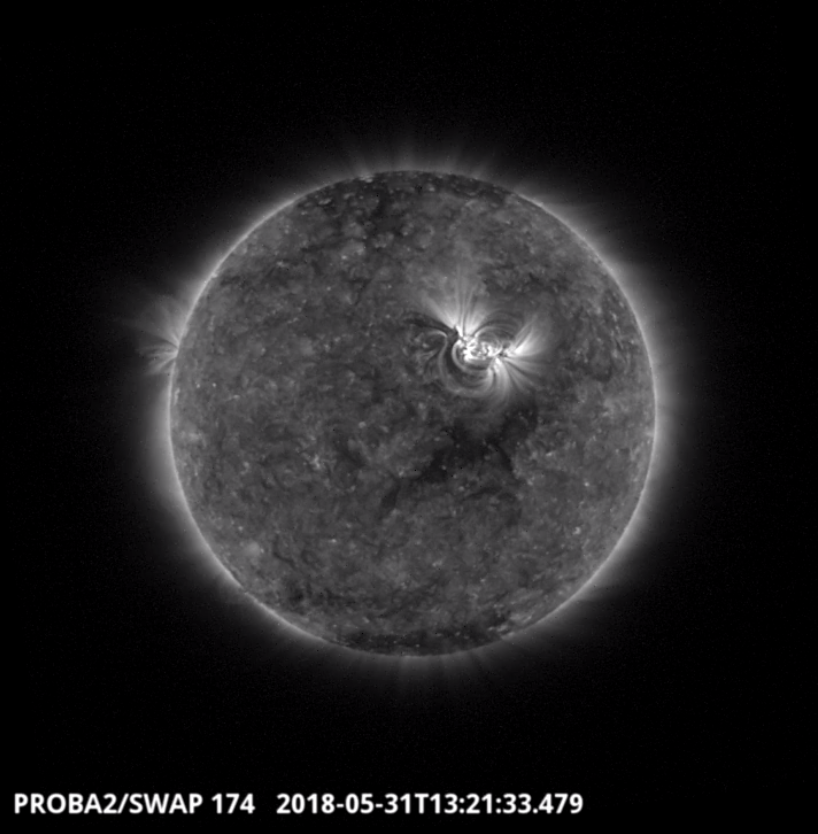
An eruption was observed by SWAP on the east limb of the Sun. This is visible in the SWAP image above at 13:21 UT on 2018-May-31.
Find a movie of the event here (SWAP movie): http://proba2.oma.be/swap/movies/20180531_swap_movie.mp4
Review of solar and geomagnetic activity
SOLAR ACTIVITY
The GOES X-ray flux background was between A5 and A8 level throughout the week.
NOAA AR 2712 was the only active region associated to a sunspot region on the near side of the Sun. It started as a beta region, evolved to beta-gamma on June 1, and then turned into a beta region again on June 3. This region produced several B flares as well as one C2.7 flare.
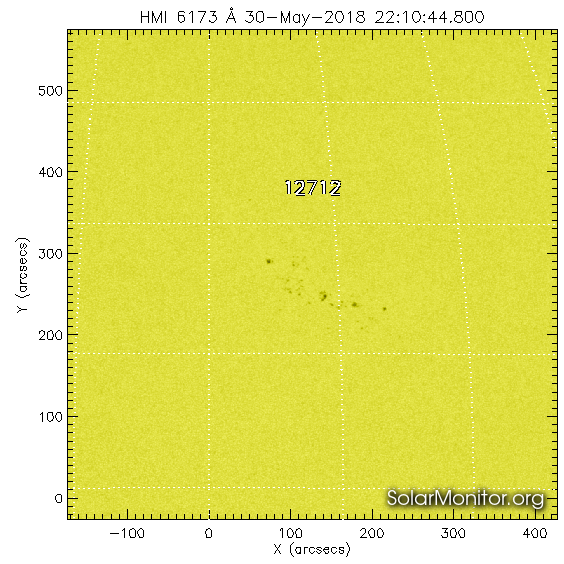
There were no strong filament eruptions nor Earth-directed CMEs.
The greater than 10 MeV proton flux was at nominal levels throughout the week.
GEOMAGNETIC ACTIVITY
Solar wind speed was nominal until the expected arrival on May 31 of a Corotating Interaction Region (CIR) and high speed stream associated with a negative equatorial coronal hole.
From 16:00 UT on May 31, the solar wind speed rose gradually from +-375 km/s to +-750 km/s (with several outliers near 800 km/s). The solar wind speed was enhanced throughout the rest of the week with values around 630 km/s.
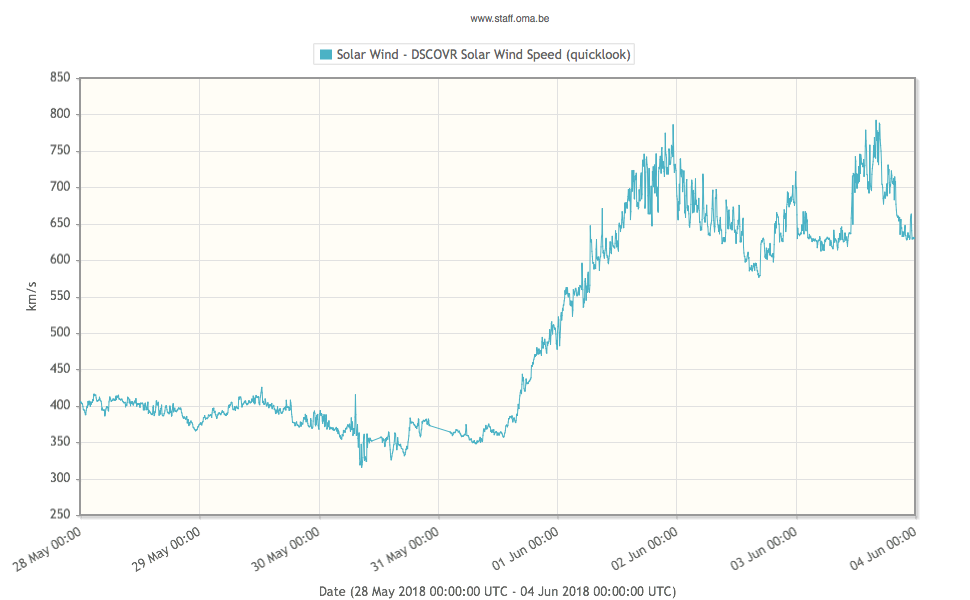
On May 31, the Interplanetary Magnetic Field (IMF) as observed by DSCOVR changed from a positive (away from the Sun, Phi between 90 and 180 degrees) to a negative (towards the Sun, Phi between 70 and 360 degrees) sector.
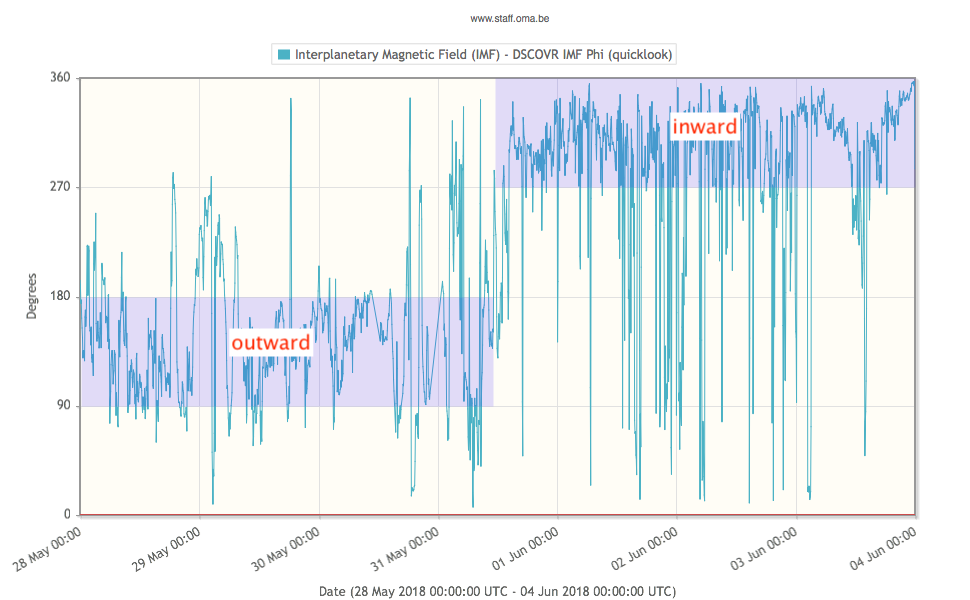
The magnitude of the IMF increased from about 4 nT to a maximum value of around 17 nT. The Bz fluctuated between positive and negative values, with a minimum value of about -12 nT.
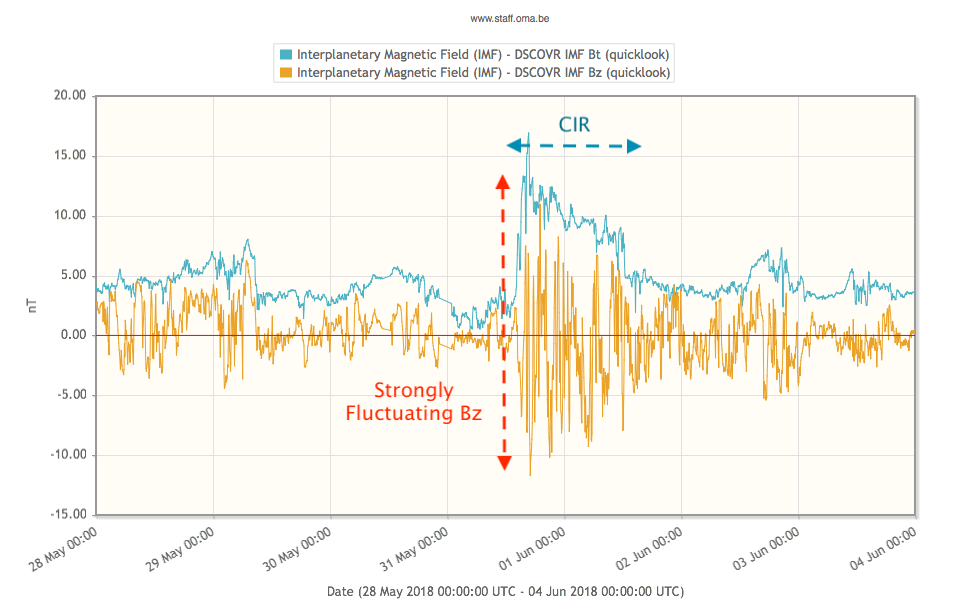
In response to the enhanced solar wind conditions, several active geomagnetic intervals (K Dourbes = 4) and one minor storm interval (K Dourbes = 5) were registered between May 31 and June 3. During the rest of the week, quiet to unsettled geomagnetic conditions were observed (K Dourbes smaller than 4).
The SIDC space weather Briefing
The Space Weather Briefing presented by the forecaster on duty from May 28 to June 3. It reflects in images and graphs what is written in the Solar and Geomagnetic Activity report.

Movie on Solar active region evolution, magnetogram + photosphere: http://www.stce.be/briefings/JHV_2018-06-04_04.39.33.mp4
Movie on Solar active region evolution, corona + chromosphere: http://www.stce.be/briefings/JHV_2018-06-04_05.34.25.mp4
The pdf-version: http://www.stce.be/briefings/SIDCbriefing-20180604.pdf
The International Sunspot Number
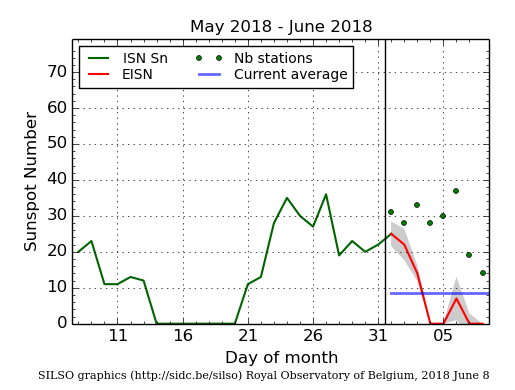
The daily Estimated International Sunspot Number (EISN, red curve with shaded error) derived by a simplified method from real-time data from the worldwide SILSO network. It extends the official Sunspot Number from the full processing of the preceding month (green line). The plot shows the last 30 days (about one solar rotation). The horizontal blue line shows the current monthly average, while the green dots give the number of stations included in the calculation of the EISN for each day.
Review of ionospheric activity (28 May 2018 - 3 Jun 2018)
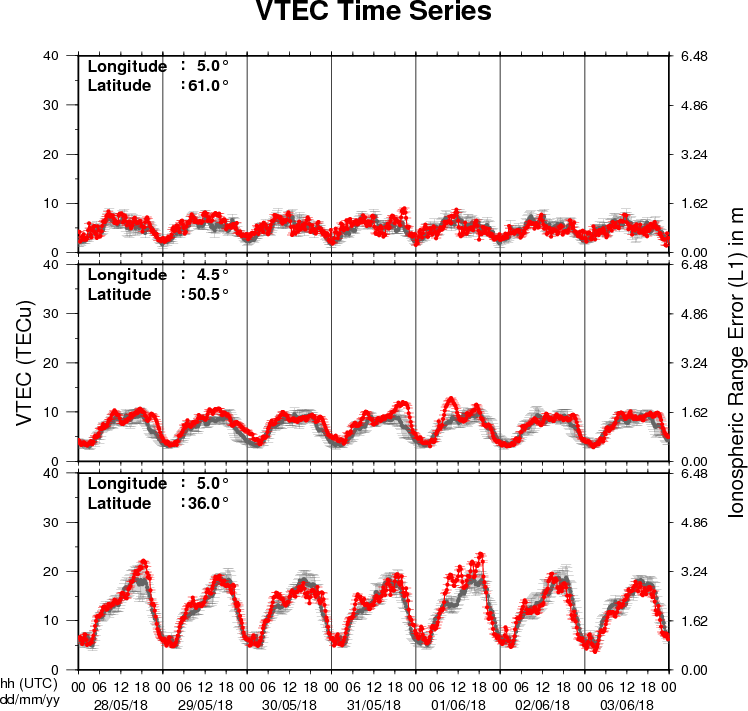
The figure shows the time evolution of the Vertical Total Electron Content (VTEC) (in red) during the last week at three locations:
a) in the northern part of Europe(N61°, 5°E)
b) above Brussels(N50.5°, 4.5°E)
c) in the southern part of Europe(N36°, 5°E)
This figure also shows (in grey) the normal ionospheric behaviour expected based on the median VTEC from the 15 previous days.
The VTEC is expressed in TECu (with TECu=10^16 electrons per square meter) and is directly related to the signal propagation delay due to the ionosphere (in figure: delay on GPS L1 frequency).
The Sun's radiation ionizes the Earth's upper atmosphere, the ionosphere, located from about 60km to 1000km above the Earth's surface.The ionization process in the ionosphere produces ions and free electrons. These electrons perturb the propagation of the GNSS (Global Navigation Satellite System) signals by inducing a so-called ionospheric delay.
See http://stce.be/newsletter/GNSS_final.pdf for some more explanations ; for detailed information, see http://gnss.be/ionosphere_tutorial.php
